
views
X
Trustworthy Source
American Kennel Club
The American Kennel Club (AKC) is a purebred dog pedigree registry in the United States. The AKC advocates for the responsible ownership of dogs and promotes purebred dog events, such as the Westminster Dog Show.
Go to source
Working alongside shepherds and herding breeds, Great Pyrenees were present to watch the flock and protect it if need be.[2]
X
Trustworthy Source
American Kennel Club
The American Kennel Club (AKC) is a purebred dog pedigree registry in the United States. The AKC advocates for the responsible ownership of dogs and promotes purebred dog events, such as the Westminster Dog Show.
Go to source
Though Great Pyrenees have several distinguishing features, they do share a few characteristics with other breeds of dog. By learning to recognize which traits are unique to this breed, this wikiHow will help you identify a Great Pyrenees.
Examining the Structure

Consider the dog's size. The Great Pyrenees is one of the largest dog breeds. Males weigh at least 100 pounds (45 kg) with a height of 27–32 inches (69–81 cm), while females stand at 25–29 inches (64–74 cm) and weigh 85 pounds (39 kg) or more.
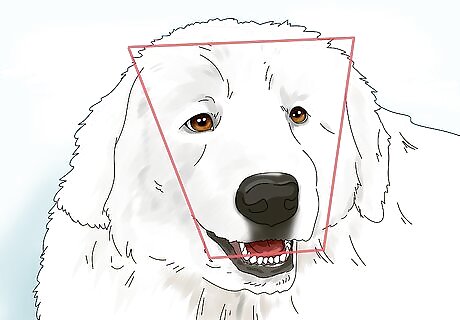
Look at the head. A Great Pyrenees has a head that resembles a wedge without appearing heavy. It is a bit round at the crown and roughly as long as it is wide with flat cheeks but no noticeable stop.
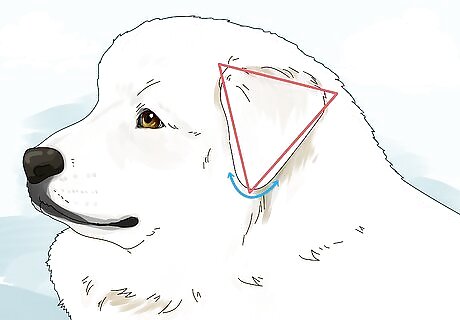
Notice the ears. The ears of a Great Pyrenees look like the letter v but rounded at the end. They are either small or medium-sized and hang down, flat, and close to the head from the level of the eyes.

Check the eyes. Great Pyrenees have eyes of a medium size and dark brown color. They are shaped like almonds and set fairly oblique with black rims and a contemplative yet elegant expression. Between them, there is a furrow.

Spot the muzzle. The muzzle of a Great Pyrenees is about the same length as the backskull which it blends in with. The lips fit tightly so that the upper covers the lower, and both the lips and nose are pigmented black. The lower part of the jaw appears strong, and the teeth meet in a scissors or level bite.
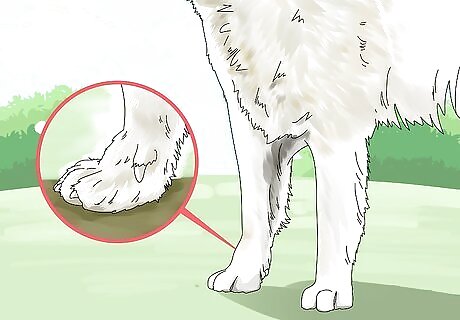
Examine the paws. A Great Pyrenees has roughly round paws that appear cupped closely. The pads are good, and the toes are arched. While the front legs each have one dewclaw, the back legs each have two.

View the tail. The tail of a Great Pyrenees is plumed and long enough to hang down to the hock. It may be carried over the dog's back or low.
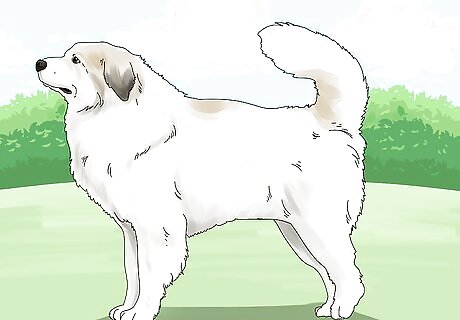
Analyze the dog's overall build. Great Pyrenees are balanced, of medium substance, rectangular, and elegant. They have a very well-muscled neck, laid-back shoulders, a fairly broad chest, oval and well-sprung ribs, a level topline, and straight legs. Their gait is comprised of balance, agility, elegance, reach, and drive, with the legs approaching the center line as the dog moves faster.
Looking at the Coat
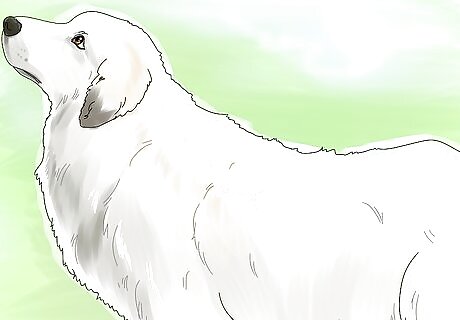
Take note of the coat's quality. Great Pyrenees have double coats consisting of a thick and long outercoat that lies flat and usually straight, and a dense undercoat that feely woolly to the touch. The overall coat is weather-resistant.
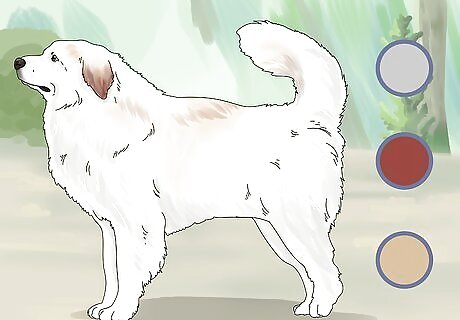
View the coat color. Typically, Great Pyrenees are solid white. They may, however, have a few grey, tan, reddish brown, or badger colored markings on the head, ears, tail, and as spots on the body, and the dog's undercoat can be solid white or a shaded color.

Notice feathering. A mane or ruff appears around the neck and shoulders of a Great Pyrenees, usually more noticeable in male dogs. The tail is well-plumed, and other feathering appears on the back of the legs, while the coat on the ears and head is a bit shorter in length and feels more fine.
Checking Temperament
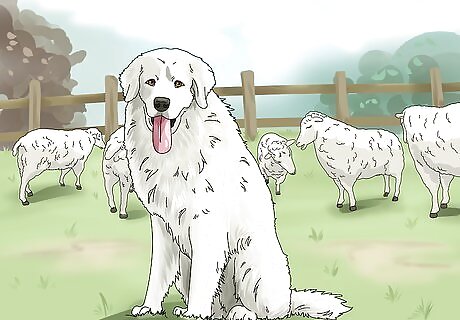
See how the dog acts around livestock. Originally bred to guard livestock, Great Pyrenees are capable of watching over a flock. This can make them a bit independent but also vigilant.Did you know? Not only were Great Pyrenees bred to watch over livestock - they were bred to do so during the night, making them naturally nocturnal.
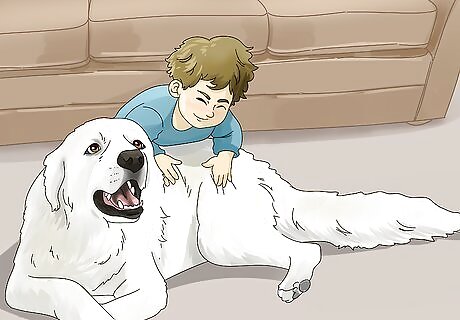
Notice affection. Great Pyrenees are known to be an affectionate family breed. They can do great with children because of this and their high levels of patience. EXPERT TIP Colleen Demling-Riley, CPDT-KA, CBCC-KA, CDBC Colleen Demling-Riley, CPDT-KA, CBCC-KA, CDBC Canine Behavior Consultant Colleen Demling-Riley (CPDT-KA, CBCC-KA, CDBC) is a Canine Behavior Consultant and the Founder of Pawtopia Dog Training. With more than 20 years of experience, she specializes in creating and customizing dog management programs for dog owners. She is a Certified Pet Dog Trainer-Knowledge Assessed, Certified Behavior Consultant Canine-Knowledge Assessed, Certified Dog Behavior Consultant, and American Kennel Club Canine Good Citizen Evaluator. Colleen is a member of the International Association of Canine Professionals and has been a featured expert in national media including the New York Times, Woman’s Day, Readers Digest, Cosmopolitan, and Yahoo.com. Colleen Demling-Riley, CPDT-KA, CBCC-KA, CDBC Colleen Demling-Riley, CPDT-KA, CBCC-KA, CDBC Canine Behavior Consultant The Great Pyrenees are gentle giants and loyal family dogs. They are protectors of their property and will bark to alert their owners of any potential threats. They are calm and enjoy spending time outside, so a home with a large yard would be ideal for them.
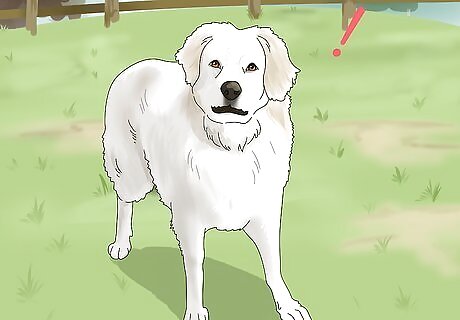
Be aware of aggression toward other animals. Though Great Pyrenees are typically fine with animals that are part of their family, they may act aggressive or territorial toward any that aren't. They do this in order to best guard their "flock" and defend against unfamiliar creatures.
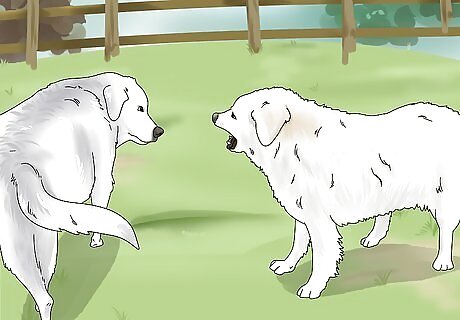
Take note of confidence. Due to their background, Great Pyrenees are naturally confident and fearless guardians. They are strong-willed and quick to defend against any trouble.
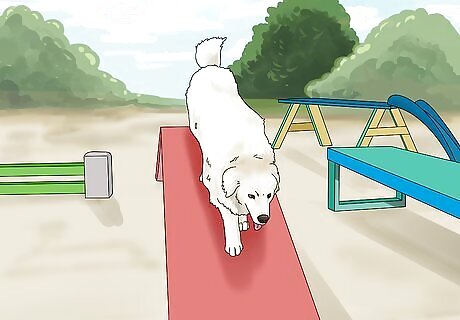
Understand the dog's exercise requirements. As a working breed, Great Pyrenees need their exercise to stay healthy and in shape. However, they do not do well in excessive heat or very humid climates.




















Comments
0 comment